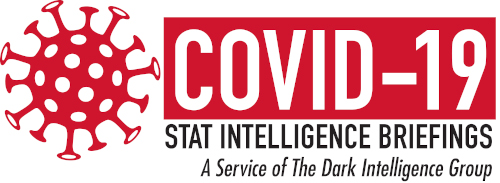Prominent false positive COVID-19 antigen test may shake public’s faith in POC testing.
Ohio Gov. Mike DeWine made headlines across the country Aug. 6, 2020, when his office announced that the governor had received a positive COVID-19 test result. This test result was immediately publicized and received widespread attention, as DeWine was the first US governor to receive a positive COVID-19 test result.
The story continued to develop when later in the same day, the governor’s office announced that DeWine had received a second test result indicating that he was, in fact, negative for COVID-19. There was initially some confusion in the public as to how these test results were obtained and what the COVID-19 infection status for DeWine actually was.

The coronavirus status of Ohio Gov. Mike DeWine (above) received widespread attention after a rapid diagnostic COVID test resulted positive. An RT-PCR molecular test follow-up determined that the test appeared to have produced a false positive result. This development coincided with the timing of large-scale purchasing plans for millions of rapid point-of-care tests in Ohio and at least six other states. (Photo source: Gov. Mike DeWine Administration Web Page)
As the details of what happened have become clearer and more understood by the general public, the main driver appears to have been a false positive SARS-CoV-2 antigen test. DeWine underwent SARS-CoV-2 antigen testing as part of a COVID-19 testing protocol before meeting with President Donald Trump.
Follow-up testing several hours later on the same day included two separate SARS-CoV-2 RT-PCR tests that were run on different diagnostic platforms. Both of these molecular tests provided negative results, leading to the conclusion that the initial positive result was indeed a false positive. A repeat PCR test two days later also resulted negative, further reinforcing this explanation.
In a statement by Governor DeWine’s office, the state of Ohio said, “The test administered this morning to the Governor in Cleveland, as part of the protocol required to meet the President, was an antigen test. These tests represent an exciting new technology to reduce the cost and improve the turnaround time for COVID-19 testing, but they are quite new, and we do not have much experience with them here in Ohio. We will be working with the manufacturer to have a better understanding of how the discrepancy between these two tests could have occurred.”
While clinical laboratory leaders understand that false positive results are more likely to occur with SARS-CoV-2 antigen tests than they are with PCR tests, the public perception of these tests may have shifted. With headlines like “Ohio Governor Says His Flawed Virus Test Shouldn’t Undercut New, Rapid Methods” by the New York Times; “Ohio governor’s apparent false positive coronavirus test troubles health experts mindful of deniers” by the Washington Post; and “Ohio governor warns people against seeing Covid-19 tests as unreliable after he received a false positive” by CNN, it is evident that public perception of antigen testing has been impacted to some degree.
Impact on Clinical Laboratories
Antigen tests detect the presence of a specific viral antigen, which implies current viral infection. Therefore, false positive results can have serious implications for patient isolation, patient therapy, contact investigations, and unnecessary laboratory testing.
DeWine’s false-positive SARS-CoV-2 antigen result comes at a time when these rapid, point-of-care (POC) tests are being emphasized, and public funding for these tests has been strongly pushed at both the national and state level (See Order for 3.5 Million POC SARS-CoV-2 Antigen Tests May Decrease Need for Clinical Lab-Based PCR Testing). While the decreased specificity of these tests compared to PCR tests is well recognized in the laboratory industry, the public may not understand that qualitative test results are not always guaranteed to be accurate with most tests.
As clinical laboratories are experiencing growing competition from POC antigen tests that can be performed outside of traditional laboratory settings, this prominent false positive may be of interest as it influences the perception of antigen testing both in the public and political arenas.
DeWine’s false positive will, at the least, emphasize the lower rate of specificity expected with antigen testing and may influence how these tests are utilized moving forward.
While the impact of this publicized story remains to be seen, it may lead to a shift in demand from rapid antigen tests toward the more accurate, laboratory-based PCR tests.

—By Caleb Williams, Editor, COVID-19 STAT
Related Resources:
Governor of Ohio’s Office: Governor DeWine Tests Positive for COVID-19
Governor of Ohio’s Office: Governor Mike DeWine, First Lady Fran DeWine Test Negative For COVID-19
NYT: Ohio Governor Says His Flawed Virus Test Shouldn’t Undercut New, Rapid Methods
Washington Post: Ohio governor’s apparent false positive coronavirus test troubles health experts mindful of deniers






